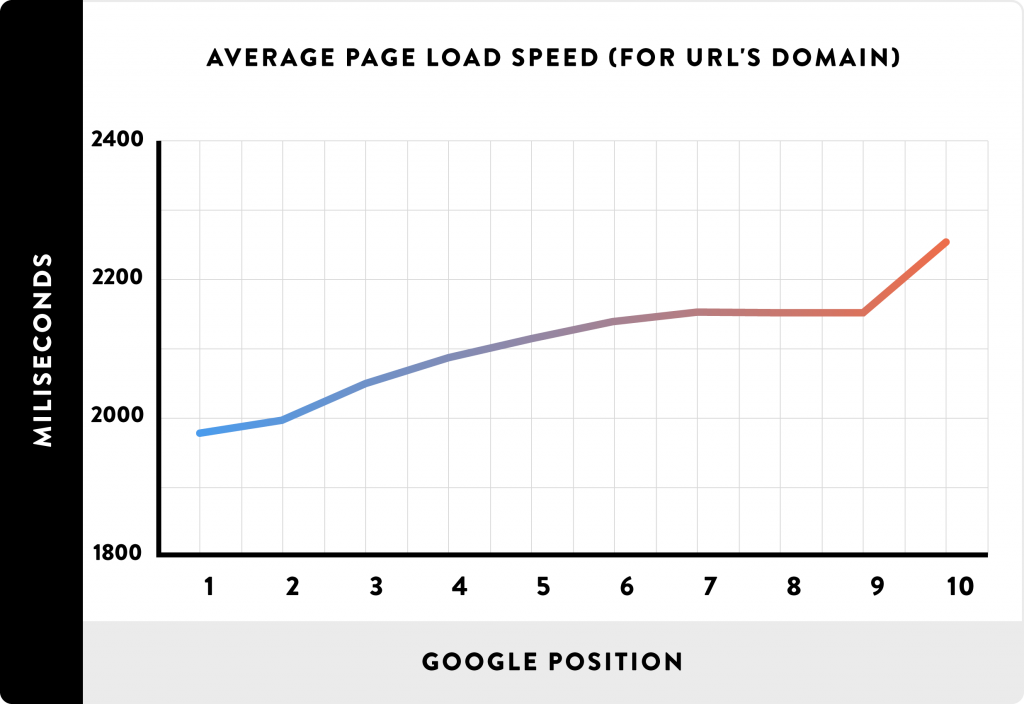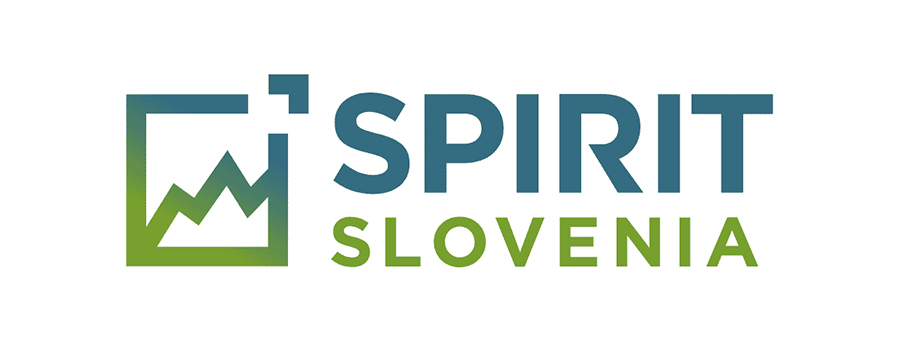Have you ever seen a page with a huge amount of traffic generating the same revenue as a page with a small amount of traffic? If your answer is “YES”, then there is probably a chance that the site with the low amount of traffic is much better optimized to generate conversions while the site with the huge amount of traffic is better optimized for SEO.
In any of those two cases, however, some arguments other than SEO (Search Engine Optimization) and CRO (Conversion Rate Optimization) are possible. The site with the small amount of traffic might just be selling the product that everybody wants and this may be the case for a good conversion rate. But even if we put 2 different sites with the same product, same price and the same amount of traffic aside, we would probably see the difference in conversion rates.
While on SEO part this might happen:
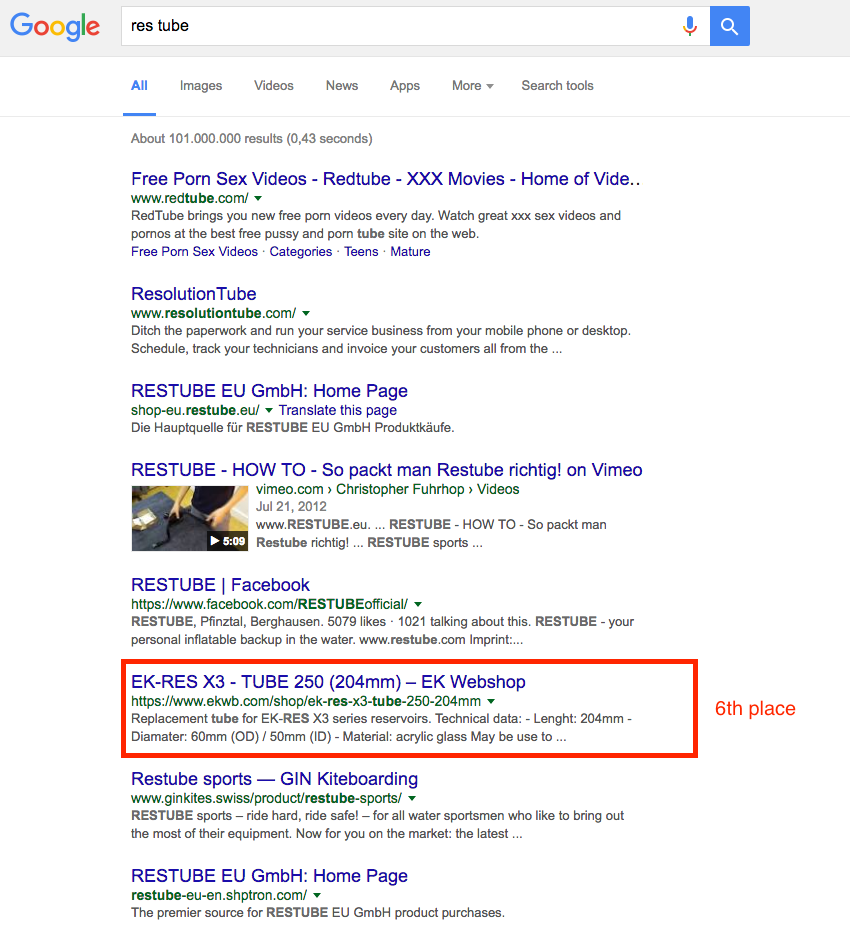
What we can see here is EKWB (Watercooling company) unintentionally competing against one of the biggest porn sites for a keyword that is actually a typo of this site’s name. So this might be the reason for the traffic not converting at all.
In any case, when we are doing proper SEO optimization the traffic coming from unintentionally targeted keywords is usually very low compared to the main traffic that we would like to rank for. If we are getting a huge amount of traffic that it is not converting it means that we probably need to optimize our site for conversions.
Going back to the basics, the main purpose of SEO is to bring us a large amount of traffic through optimizing the page for specific keywords and the main purpose of CRO is to make sure our visitors convert.
How do CRO and SEO go along?
While we should use SEO to drive right traffic to our page we should always work on CRO in order to optimize conversions. As Einstein once said “Everything should be made as simple as possible, but not simpler.” Every web site should be as simple as possible to inform the customer about the product effectively and lead them to make a purchase.
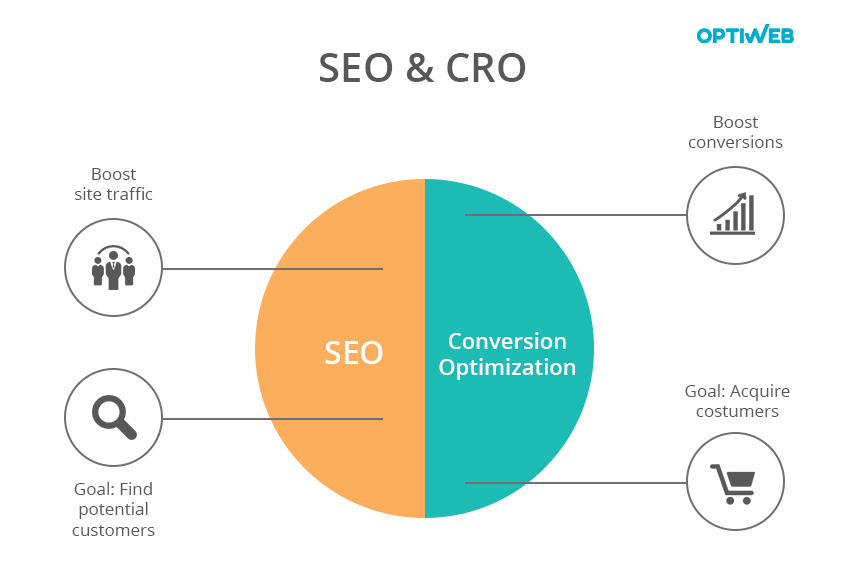
What do both optimizations have in common?
- Content relevance, authority and usability: Content that is interesting for readers might get them to share it, which brings in more referral traffic, more backlinks for SEO and of course more conversions.
- Meta data: It is a known fact that meta information with a good CTA text and rich snippets improves CTR in the search results.
- Page speed: Kissmetrics conducted an analysis and the results show that 47% of consumers expect a web page to load in less than 2 seconds and 40% abandon a website if it takes more than 3 seconds to load. The analysis also found out that 79% of shoppers who are dissatisfied with the website are less likely to buy from the same site again. The most important information in the analysis is showing that 1 second delay in a page response results in a 7% reduction in conversions, The analysis conducted by Brian Dean at Backlinko shows that faster pages rank higher.
- Image optimization: Optimizing images adds a lot to site speed. Also adding a description to the image might help with conversions if something breaks down.
- Adding a video: While adding a video to a page should give a little boost to SEO, adding a descriptive video of products that we are trying to sell boosts conversion by 20% on average. A study from eyeviewdigital shows that using the video on landing page increases conversions up to 80%. According to different studies almost 90% people say that descriptive video would help them make a decision about the product. Despite that, only 24% of the biggest brands are using video for selling their services.
How does A/B testing affect on SEO rankings and how long should you run the tests?
The basics of CRO are A/B tests. And with that known comes the question how does that affect the rankings. Google does encourage A/B testing on sites, so it is completely safe. But still the tests should be running for the short period of time which is only possible with high volume traffic pages.
If we are A/B testing we should be using “rel=canonical” tag on the B variation page pointing back to the original one. After the test is done, the winning variation should be applied to the original url.
The problem in loss of rankings might happen if we would change content drastically at once on main page after the test is done we could increase the rankings greatly due to a better content.
You can use this calculator to determine how much time you should be running tests. But we suggest running them at least 7 days to get the best statistical significance possible.
10 conversion e-commerce obstacles that you could test first:
- Required registration: Customer has to register to even finish the purchase.
- Shipping rates shown too late: Consumer sees the unexpected shipping cost in the last step of checkout instead of seeing that as soon as possible.
- Single step checkout: Showing customers the steps on checkout pages or using even single page checkout usually improves conversion rate.
- Discount coupons: That could kill the conversion, because customers see that it does exists, so they go and search for it instead of finishing the purchase. I would use that only if you really give out a lot of coupons and if you make them available to almost everyone (like 3% discount for regular customers, 5% for signing up for the news, a lot of popups, …).
- Unclear shipping dates: Letting people know when they are supposed to receive the product might boost conversion or kill it if the shipping date is set too late (e.g. up to 60 days).
- The button colors: Make sure your add to cart button and checkout button are standing out compared to other buttons on the site.
- Up-sells, Cross-sells and Down-sells: Offering people similar products they can combine with the order might improve average order value.
- Time limit: A timer on product pages or setting a time limit on current offers is giving people the sense of urgency, which usually improves conversion (e.g. “The offer is valid for 3 more hours only”, “today only”).
- Form lengths: The longer the form, the less people might finish it. Have you ever tried answering a 4-page-long survey about vacuum cleaners? That’s what I’m talking about.
- Leaving the checkout: Implementing an exit-intent pop-up with 5 % discount or sending an e-mail offering a discount when clients abandon the cart can improve CR up to 40 %.
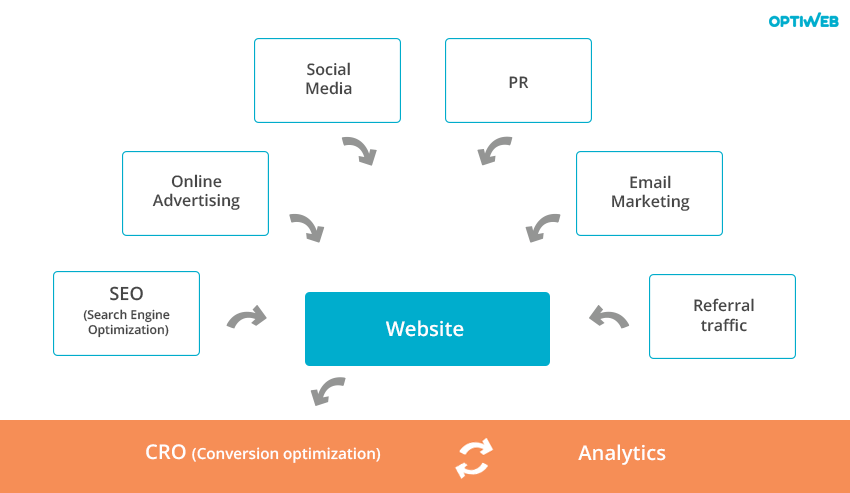
Conclusion:
SEO and CRO can work perfectly together. Once you find out the critical stuff that you need you are ready to go. In case you already have a decent amount of traffic, this is the best moment to start optimizing for conversions. If you have a new page with a low amount of traffic you could do both at the same time, but since you need some traffic to begin with to properly test more variants of a page I suggest that you generate some paid traffic before SEO becomes active and starts bringing masses to the site.
Do you need help with SEO or CRO? You are welcome to contact us.


